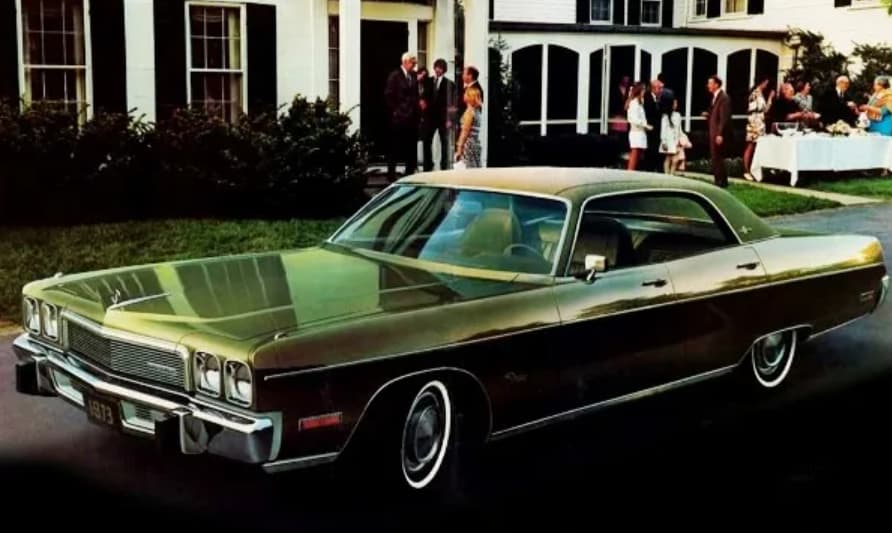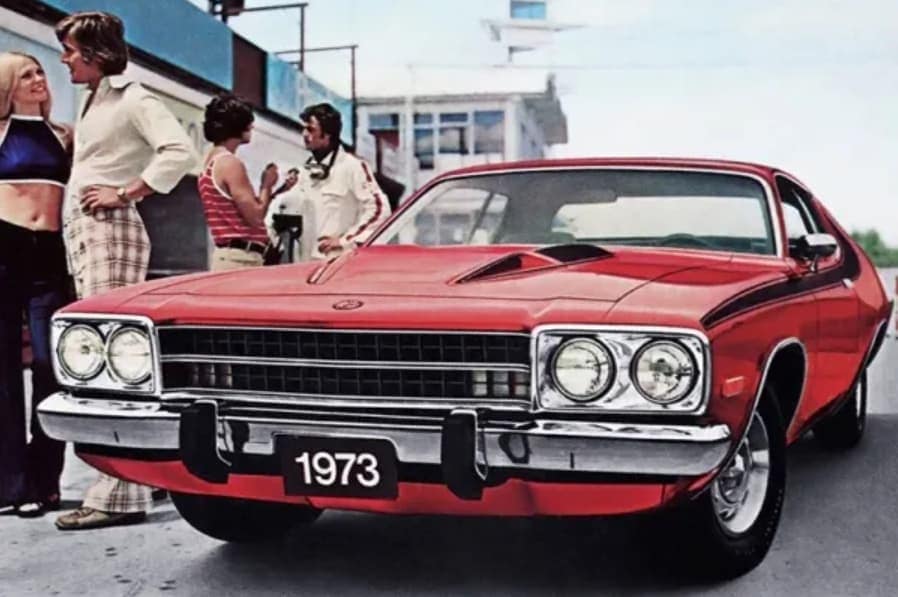1973: Plymouth’s Biggest Year
In a remarkable turn of events, Plymouth experienced its peak in sales and production during the year 1973. This milestone, however, marked the beginning of a downward spiral for the brand. Let’s delve into the extraordinary achievements of Plymouth in that monumental year and the subsequent challenges it faced.

The Birth of Plymouth and its Early Success
When the Chrysler Corporation launched the Plymouth division on June 7, 1928, it was nothing short of a Motor City miracle. Under the leadership of Walter P. Chrysler and his team, the brand swiftly climbed to third place in the fiercely competitive low-price field within just four years. Plymouth surpassed all rivals, except Ford and Chevrolet, the industry giants. This remarkable position was maintained for several decades, with occasional setbacks followed by impressive comebacks in 1970-71. Although Plymouth slipped to fifth place in the 1973 model year, it achieved its highest sales volume ever with 882,196 vehicles—a feat unmatched in the subsequent 29 years.
(Note: It is worth mentioning that carmakers’ annual output can be reported in various ways, leading to occasional confusion. Some sources mention Plymouth’s ’73 model year production as 746,821 units, while others state it as 973,000. However, we believe the figure of 882,000 vehicles is more accurate, and the essence of this achievement remains unchanged: In MY 1973, Plymouth reached its peak in sales and production.)

The Dominance of the Valiant and the Appeal of the Duster
The compact Valiant emerged as the undisputed volume leader for Plymouth in 1973, accounting for over 380,000 vehicles and contributing to 43% of the brand’s sales that year. Among body styles, the sporty two-door Duster fastback stood out as the most popular choice, outselling the boxy coupe and sedan by more than 2 to 1. Buyers had the option to choose the basic Duster coupe with Slant 6 power at an affordable price of only $2,376. Alternatively, they could upgrade to the Duster 340, a junior muscle car boasting a robust 240 hp V8 engine, heavy-duty suspension, special graphics, and other enticing features.

The Steady Performance of the Satellite and Road Runner
Plymouth’s intermediate-class Satellite maintained its steady sales performance in 1973, accounting for nearly a quarter of the brand’s overall sales. The iconic Road Runner, with its distinctive style, continued to be part of the lineup but offered limited choices in terms of powertrains. The standard model featured a 318 CID V8 engine, while the optional 400 CID big-block V8 engine was restricted to 280 hp due to emissions regulations and available only with the Torqueflite automatic transmission. The lineup also included models like Satellite Custom, Satellite Sebring, and Satellite Sebring-Plus, with two-door coupes outselling sedans and wagons by a significant margin.

The Decline of the Barracuda and the Rise of the Fury
By 1973, the Barracuda, Plymouth’s once-popular ponycar, was nearing the end of its road. The Slant 6 and big-block V8 engines were discontinued, leaving only the standard 318 CID V8 and the optional 340 CID V8. In 1970, when the new Dodge Challenger was introduced alongside the redesigned Barracuda, Chrysler’s pony car sales were evenly divided between the two models. The Barracuda experienced a surge in volume of over 20% in ’73, reaching more than 22,000 units. However, both Chrysler ponycars were ultimately discontinued after 1974.
Next to the Valiant and Duster, the full-size Fury emerged as Plymouth’s volume leader in 1973, with over 261,000 units sold. The Fury lineup consisted of Fury I, Fury II, Fury III, and Gran Fury. While the well-equipped Fury III remained the best-selling variant, the flagship Gran Fury offered an enhanced interior and additional exterior chrome for a slightly higher price. In 1975, the intermediate-class offering was rebranded as Fury, while the full-sized Fury became the Gran Fury.
The Steady Decline and the End of an Era
While 1973 represented a pinnacle for Plymouth, it also marked the beginning of the brand’s steady decline. In 1975, Plymouth’s sales volume fell below 500,000 for the first time since 1963. With the corporation’s total market share shrinking, it became increasingly challenging to justify development and marketing budgets for individual brands. Subsequent models, such as the 1978 Plymouth Volare, closely resembled their Dodge counterparts. The launch of the Eagle brand in 1988 further diluted Plymouth’s lineup, resulting from Chrysler’s acquisition of American Motors.
Hindsight reveals that the writing was on the wall in 1979 when Dodge sales surpassed those of Plymouth for the first time. Although Plymouth was positioned as the entry-level brand in Chrysler’s marketing strategy, the limited range of models, which were essentially replicas of other Chrysler offerings, constrained sales growth. By 1995, the Plymouth lineup had dwindled to just three domestic models: Voyager minivan, Breeze, and Neon. The final Plymouth vehicle, a Bright Silver Neon sedan, rolled off the assembly line at the Belvidere, Illinois plant on June 28, 2001, officially marking the end of an era.

Conclusion
The year 1973 will forever be remembered as Plymouth’s pinnacle in terms of sales and production. However, this remarkable achievement was followed by a gradual decline that ultimately led to the discontinuation of the brand in 2001. The Valiant, Duster, Satellite, Road Runner, Barracuda, and Fury played significant roles in shaping Plymouth’s legacy during that iconic year. While Plymouth’s glory days are a thing of the past, the brand’s impact on the automotive industry will always be cherished and remembered.